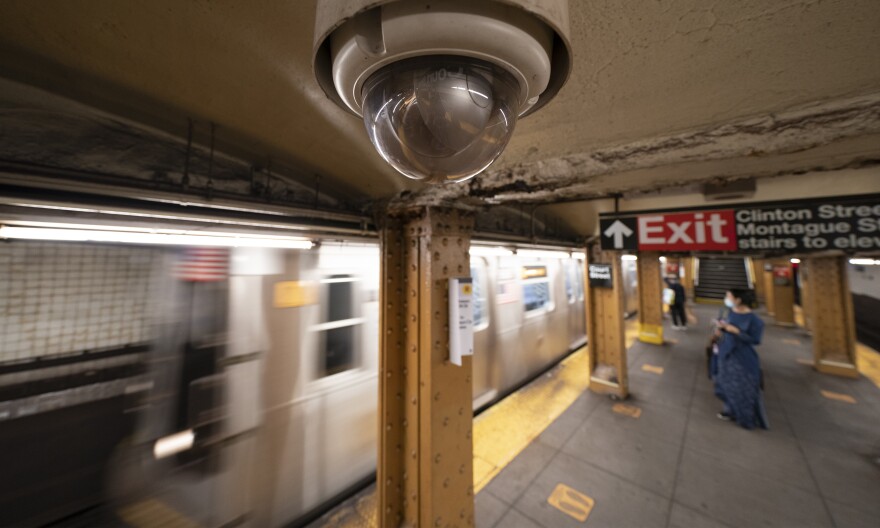As a manhunt began Tuesday morning for the person who shot 10 people in a crowded Brooklyn subway car, law enforcement quickly looked to the station cameras that they hoped had caught their suspect on tape.
But they were out of luck. The surveillance cameras at the 36th Street station had not been working, MTA officials later said.
While New York City boasts the world’s fifth largest metropolitan train system, it ranks 14th in terms of the number of surveillance cameras it has in operation. And even the cameras it does have have been known to malfunction. In 2010, the MTA told the New York Times that nearly half the cameras in the subway system didn’t work. Later in 2019, a state comptroller's report found problems with camera maintenance.
A study by Comparitech, a company that studies surveillance systems, counted the security cameras in major metro areas last year and found that London has about 10 times more cameras per square mile than New York. Delhi has 20 times more cameras than New York. Paul Bischoff, the study’s author, said he believes they can be effective.
“I think they help deter crimes, and I think they help find perpetrators of crimes after crimes have been committed,” said Bischoff, who is a privacy expert.
Studies suggest that surveillance cameras can reduce crime, especially crimes that are planned ahead of time.
London and several other cities have begun adding facial recognition to their camera systems. Bischoff’s study found upgrades like these don’t have the same effect on crime.
Metropolitan train systems in Shanghai, Washington, D.C., and San Francisco have invested in extensive surveillance systems on trains. But putting them in New York’s subway system, which is 120 years old, would be expensive, according to experts.
“Those are capital projects and transit agencies have to make very tough decisions regarding capital projects,” said Bill Terry, Director of the National Transit Institute at Rutgers. Installing cameras could mean making cuts in important areas elsewhere, like in fleet vehicles or facilities.
What’s more, he said cameras are not the only expense associated with keeping up surveillance.
“Not just the cameras,” he said. “There's software storage. There's back office ramifications of having those systems. There are individuals to monitor those cameras.”
One study calculated the cost of London’s CCTV system at more than $800 million over four years.
The MTA has plans to install and upgrade more cameras, according to Lisa Daglian, Executive Director Permanent Citizens Advisory Committee to the MTA. However, she hopes the agency implements a system to maintain existing cameras.
“In the elevators and escalators that are being installed there are signals that indicate if there's a malfunction,” she said. “So it would be great to have some kind of signal sent if the cameras go out.”
In some cases the cameras made a difference, like in 2021 when one woman was accused of shoving another woman into a moving train. Still, nothing is full proof.
In February of this year, a video camera on a Long Island Rail Road train recorded a man shooting a commuter in the back of the head. Despite the video recording, Suffolk County Police said Wednesday that there still has not been an arrest in the case.


